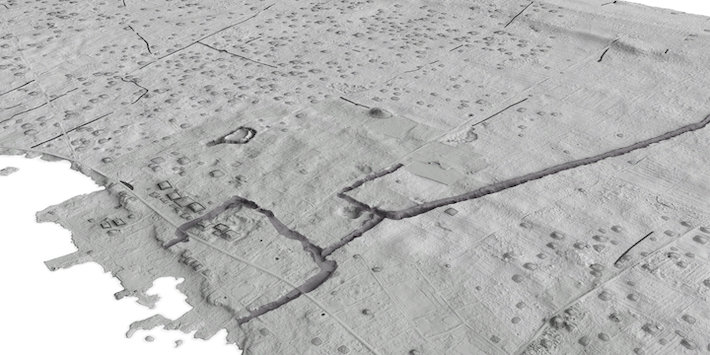 NUKU’ALOFA, KINGDOM OF TONGA—ABC News Australia reports that traces of an ancient city in the form of some 10,000 mounds have been identified on the Pacific Island of Tongatapu through high-tech mapping with aerial scanners and archaeological fieldwork. “Earth structures were being constructed in Tongatapu around A.D. 300. This is 700 years earlier than previously thought,” said Phillip Parton of The Australian National University. As the settlement spread and grew, he explained, people would have interacted in new ways and done different kinds of work to support the larger population. The city’s influence eventually spread across the southwest Pacific Ocean between the thirteenth and nineteenth centuries, until it collapsed with the arrival of Europeans and unknown diseases. “This is just the beginning in terms of early Pacific settlements. There’s likely still much to be discovered,” Parton concluded. Read the original scholarly article about this research in Journal of Archaeological Method and Theory. To read about another discovery from the island nation, go to "World Roundup: Tonga."
NUKU’ALOFA, KINGDOM OF TONGA—ABC News Australia reports that traces of an ancient city in the form of some 10,000 mounds have been identified on the Pacific Island of Tongatapu through high-tech mapping with aerial scanners and archaeological fieldwork. “Earth structures were being constructed in Tongatapu around A.D. 300. This is 700 years earlier than previously thought,” said Phillip Parton of The Australian National University. As the settlement spread and grew, he explained, people would have interacted in new ways and done different kinds of work to support the larger population. The city’s influence eventually spread across the southwest Pacific Ocean between the thirteenth and nineteenth centuries, until it collapsed with the arrival of Europeans and unknown diseases. “This is just the beginning in terms of early Pacific settlements. There’s likely still much to be discovered,” Parton concluded. Read the original scholarly article about this research in Journal of Archaeological Method and Theory. To read about another discovery from the island nation, go to "World Roundup: Tonga."
Traces of an Ancient City Discovered on a Pacific Island
